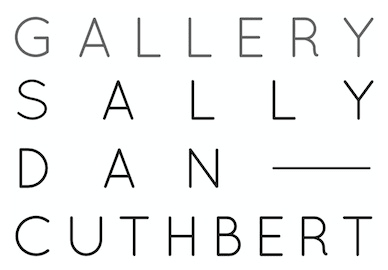In Akil Ahamat’s Dawn of a Day Too Dark to Call Tomorrow, 2021, a snail blanketed in wet purple light whispers to a human interlocutor: “None of the stories you tell ever go anywhere, everything compressed into a shimmering unison.” Radical Slowness, curated by Anna May Kirk and Tai Mitsuji, brings six artists into just such a “shimmering unison.” The show can be thought of, that is, as a field of reflection and difference, in which artists’ desultory approaches are grounded in one key common concern: the notion of slowness as a subversive mode of being in time.
Kirk and Mitsuji share a vision of slowness as a many-splendored thing: as a poetics, as an aesthetic and a political sensibility, a way of paying attention to works of art, and even, in some ways, a medium. Mitsuji explains that “for us, slowness is more than just a negation of pace. It is an active strategy for accessing the multitude of temporalities that quietly shape and characterise our world – often unseen by the quick glance or the swiping thumb.” Inspired by the work of art historians such as Jonathan Crary and Jennifer Roberts, but also by their own haptic experiences of living in the frictionless stream of newness which is the digital present, the duo aim to explore the longer, more viscous, and less linear temporalities which sit beneath and quietly structure our lives. These temporalities might be circular, deeply historical, focussed into the long future, or nestled in a moment of loaded suspension. So, too, might they be characterised by continuity or rupture; repeatability or singularity.
A number of works will grow and develop during the exhibition, rendering each viewer’s experience with the work contingent on the particular moment of encounter. Aude Parichot’s progressive drawing installation Chauffe Marcel chauffe: conversation with Rrose Sélavy, 2022, for example, will evolve and dissolve over the course of the show. The artist, in concert with invited participants and collaborators from the past, present, and future, will first assemble and then dissemble the immersive drawing – creating an open, malleable environment which shifts from one day to the next. Emma Fielden’s Just a Second and I orbit a point in space where nothing exists . . . and time dissolves, both 2022, incorporate live and participatory performance elements into Fielden’s embodied drawing practice, which also responds here to the conditions and dimensions of The Lock-Up’s site. These works may invite extended or repeated viewing. As Kirk puts it, they “ask the viewer to spend some time with the work,” suggesting that there might be radicality, too, in slowness not just as a mode of curatorial or creative operation, but also as a viewing practice.
Izabela Pluta’s Ascending air, unfolding motion, 2022, also responds to the conditions of The Lock-Up’s site. Used in the nineteenth century as a police lock-up – and with “cell” spaces still showing graffiti from some of their inhabitants – the space itself is a porous, multi-layered historical structure, with its ambivalent history still immediately present on the surfaces of walls, floors, and ceilings. Pluta’s work is situated in The Lock-Up’s yard, with its open ceiling and resultant exposure to the elements, and “punctures” both the physical space that it occupies and the compounded timelines to which it makes reference. Piercing through the ceiling line of the walled yard and into the sky above, the work uses cyanotype processes to render images of clouds based on a photograph the artist’s father took in 1987, out the window of an aeroplane, when travelling from Germany to Australia as part of the family’s migration from Poland. In this way, the work forges ruptures through the soft fabric of time in many registers: it draws together the timelines of the work’s own historical reference, as well as its physical creation, and the long ambient time of the sky above, while also echoing the rupture of migration in the artist’s family history.
Other works invoke stillness – like Dean Cross’s The First Second, 2019, which shows an alarm clock flickering between 12:00 and 12:01 am, and Tané Andrews’s We Carry This Weight Together, in which a digital stream of water (also, then, frictionless) hits a “real world” rock, confounding our expectations of wear over time. Andrews also presents The Eyes say More than the Mouth, 2022, which calls us sonically into long geological histories and the precarious future of Earth in the face of climate catastrophe. With its looped ASMR track played from two nautilus shells facing each other, the work also calls us into a kind of cyclical, non-progressive temporal experience, like Ahamat’s story which “never go[es] anywhere.”
Contrary, perhaps, to the governing logic of our lives as producers and consumers, slowness here is generative, and generous. As an aesthetic, political, and even affective orientation, and as an ethos for both making art and engaging with it as an audience member, it offers myriad ways to think and to be. Moreover, it offers these “alternative” modes of being as already-there in our experience, embedded in the everyday if only we were to pay the right kind of attention. It offers these temporalities, that is, as carved already into the walls of our lives.


